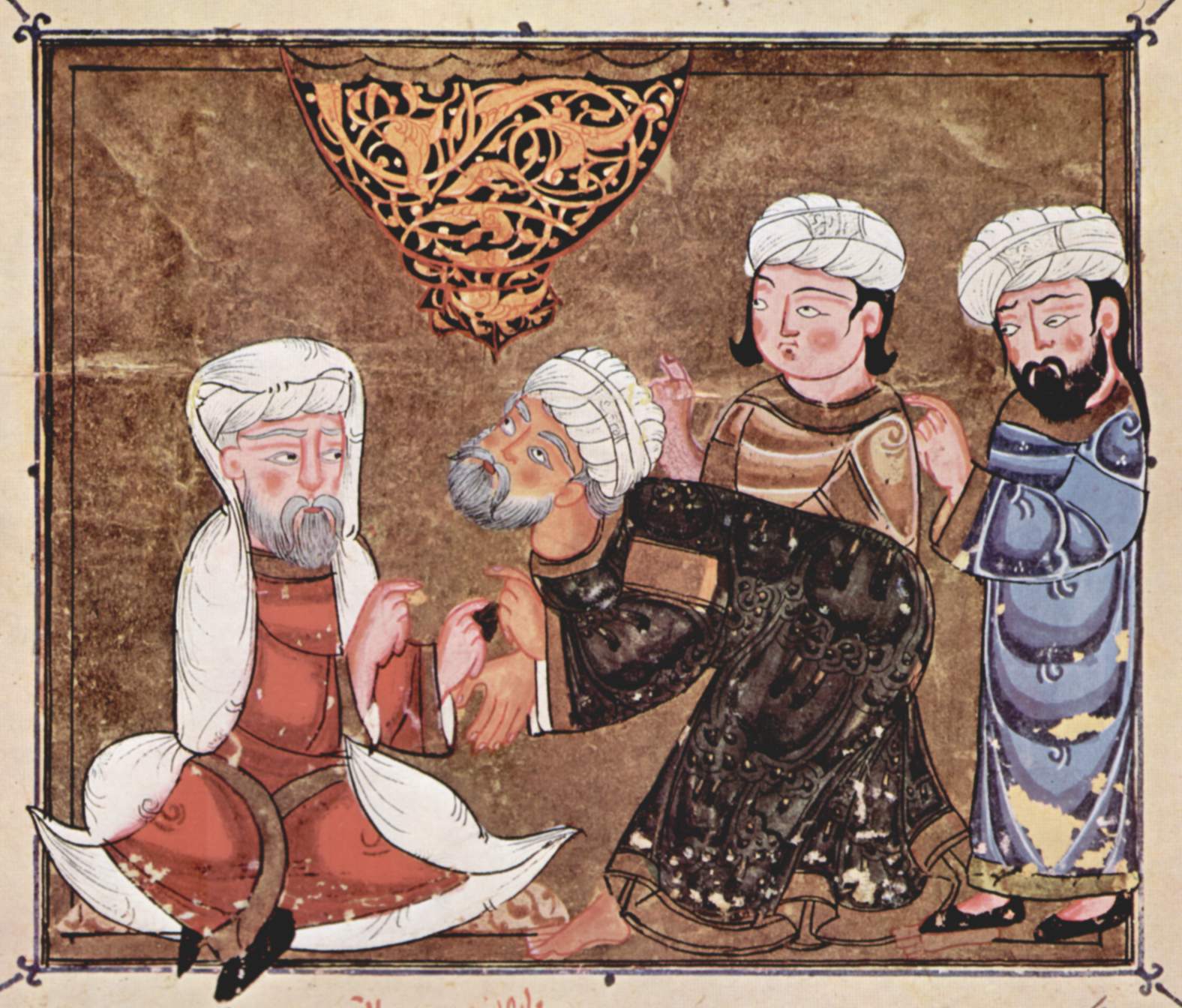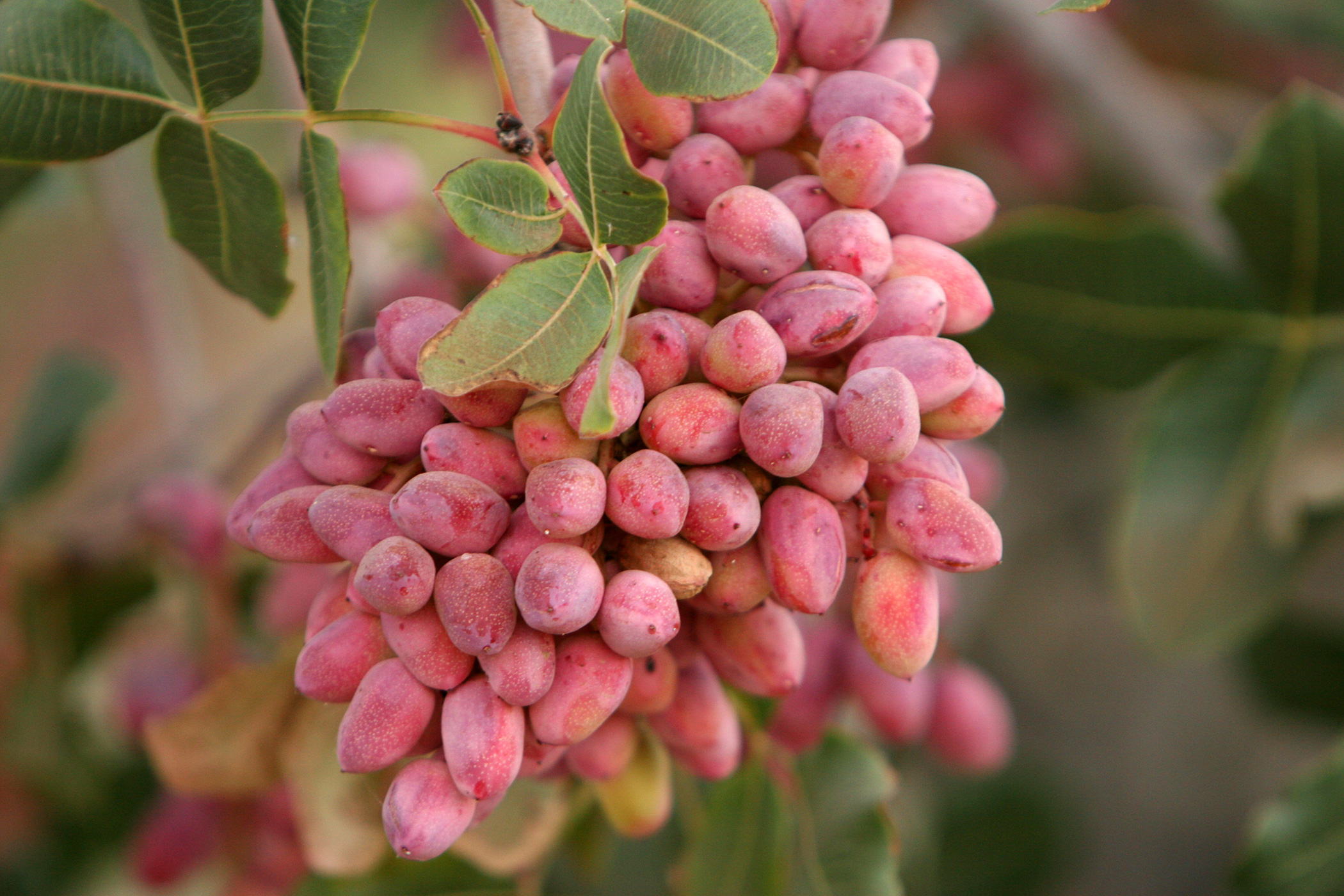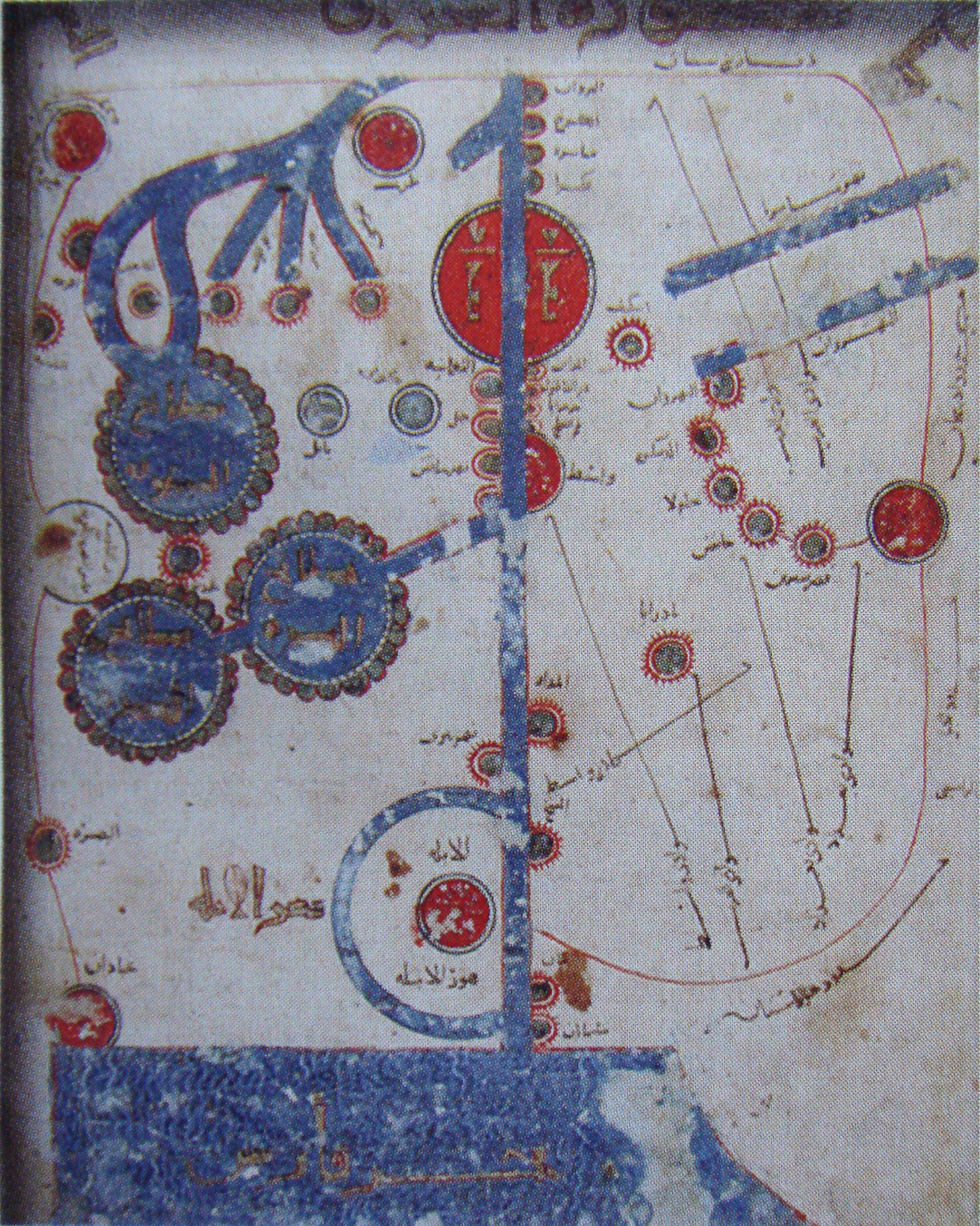|
Maarrat Al-Nu'man
Maarat al-Numan (), also known as al-Ma'arra, is a city in northwestern Syria, south of Idlib and north of Hama, with a population of about 58,008 before the Civil War (2004 census). In 2017, it was estimated to have a population of 80,000, including several displaced by fighting in neighbouring towns. It is located on the highway between Aleppo and Hama and near the Dead Cities of Bara and Serjilla. Name The city, known as Arra to the Greeks, has its present-day name combined from the Aramaic word for cavܡܥܪܗ(''mʿarā'') and that of its first Muslim governor, Nu'man ibn Bashir al-Ansari, a companion of Muhammad, meaning "the cave of Nu’man". The crusaders called it Marre. There are many towns throughout Syria with names that begin with the word Maarat, such as Maarrat Misrin and Maarat Saidnaya. History Abbasids to Fatimids (891–1086) In 891 Ya‘qubi described Maarrat al-Nu‘man as "an ancient city, now a ruin. It lies in the Hims province."le Strange, 1890, ... [...More Info...] [...Related Items...] OR: [Wikipedia] [Google] [Baidu] |
List Of Cities In Syria
The country of Syria is Administrative division, administratively subdivided into Governorates of Syria, 14 governorates, which are sub-divided into Districts of Syria, 65 districts, which are further divided into 284 sub-districts. Each of the governorates and districts has its own centre or capital city, except for Rif Dimashq Governorate and Markaz Rif Dimashq district. All the sub-districts have their own centres as well. Each district bears the same name as its administrative centre, with the exception of Mount Simeon District where the centre is the city of Aleppo. The same applies to all ''nahiyas'' (sub-districts), except for the Mount Simeon Nahiyah where the centre is the city of Aleppo. Governorate and district capital cities Sixty-four of the 65 districts of Syria have a city that serves as the regional capital (administrative centre); Markaz Rif Dimashq is a district with no official regional centre. The city of Damascus functions as a governorate, a district and a ... [...More Info...] [...Related Items...] OR: [Wikipedia] [Google] [Baidu] |
Bara, Syria
Bara or al-Bara () is one of the former "Dead Cities" in northwestern Syria. It is located in the Zawiya Mountain approximately north from Hama and approx. 80 km southwest from Aleppo. Al-Bara is also a town in Ariha district. According to the Syria Central Bureau of Statistics (CBS), al-Bara had a population of 10,353 in the 2004 census. Its population is mostly Sunni Muslim.General Census of Population and Housing 2004 . Syria Central Bureau of Statistics (CBS). Idlib Governorate. History The settlement was established in the fourth century at an important trade route between |
Pistachio
The pistachio (, ; ''Pistacia vera'') is a small to medium-sized tree of the Anacardiaceae, cashew family, originating in Iran. The tree produces nut (fruit)#Culinary definition and uses, seeds that are widely consumed as food. In 2022, world production of pistachios was one million tonnes, with the United States, Iran, and Turkey combined accounting for 88% of the total. Description The tree grows up to tall. It has deciduous, pinnate leaves long. The plants are dioecious, with separate male and female trees. The flowers are apetalous and unisexual and borne in panicles. The fruit is a drupe, containing an elongated seed, which is the edible portion. The seed, commonly thought of as a nut, is a nut (food), culinary nut, not a nut (fruit)#Botanical definition, botanical nut. The fruit has a hard, cream-colored exterior shell. The seed has a mauve-colored skin and light green flesh, with a distinctive flavor. When the fruit ripens, the shell changes from green to an autu ... [...More Info...] [...Related Items...] OR: [Wikipedia] [Google] [Baidu] |
Common Fig
The fig is the edible fruit of ''Ficus carica'', a species of tree or shrub in the flowering plant family Moraceae, native to the Mediterranean region, together with western and southern Asia. It has been cultivated since ancient times and is now widely grown throughout the world.''The Fig: its History, Culture, and Curing'', Gustavus A. Eisen, Washington, Govt. print. off., 1901 ''Ficus carica'' is the type species of the genus ''Ficus'', which comprises over 800 tropical and subtropical plant species. A fig plant is a deciduous tree or large shrub, growing up to tall, with smooth white bark. Its large leaves have three to five deep lobes. Its fruit (referred to as syconium, a type of is tear-shaped, long, with a green fruit that may ripen toward purple or brown, and sweet soft reddish flesh containing numerous crunchy seeds. The milky sap of the green parts is an irritant to human skin. In the Northern hemisphere, fresh figs are in season from late August to early Octob ... [...More Info...] [...Related Items...] OR: [Wikipedia] [Google] [Baidu] |
Estakhri
Abu Ishaq Ibrahim ibn Muhammad al-Farisi al-Istakhri () (also ''Estakhri'', , i.e. from the Iranian city of Istakhr, b. – d. 346 AH/AD 957) was a 10th-century travel author and Islamic geographer who wrote valuable accounts in Arabic of the many Muslim territories he visited during the Abbasid era of the Islamic Golden Age. There is no consensus regarding his origin. Some sources describe him as Persian, while others state he was Arab. IV:222b-223b. The ''Encyclopedia Iranica'' states: "Biographical data are very meager. From his ''nesbas'' (attributive names) he appears to have been a native of Eṣṭaḵr in Fārs, but it is not known whether he was Persian". VIII(6):646-647 (I have used the updated online version). Istakhri's account of windmills is the earliest known. Istakhri met the celebrated traveller-geographer Ibn Hawqal, while travelling, and Ibn Hawqal incorporated the work of Istakhri in his book ''Kitab al-Surat al-Ard''. Works Istakhri's two surviving ... [...More Info...] [...Related Items...] OR: [Wikipedia] [Google] [Baidu] |
Ya‘qubi
ʾAbū al-ʿAbbās ʾAḥmad bin ʾAbī Yaʿqūb bin Ǧaʿfar bin Wahb bin Waḍīḥ al-Yaʿqūbī (died 897/8), commonly referred to simply by his nisba al-Yaʿqūbī, was an Arab Muslim geographer. Life Ya'qubi was born in Baghdad to a family of noble background, his great-grandfather was Wadih, the freedman of the caliph Al-Mansur and ruler of Egypt during the reign of al-Mahdi. Until 873, he lived in Armenia and Khorasan, working under the patronage of the Tahirid Governors; then he traveled to India, Egypt and the Maghreb. In 872, he listed the kingdoms of Bilād as-Sūdān, including Ghana, Gao, and Kanem. His methodical approach to writing history includes personal observations and interviews to close relations on topics that Yaqubi could not encounter first-hand. He covered topics of natural, human and economic geography as well as noting down cultural, historical and topographic information. His sympathies with Ahl al-Bayt are found throughout his works. He die ... [...More Info...] [...Related Items...] OR: [Wikipedia] [Google] [Baidu] |
Maarat Saidnaya
Maarat Saidnaya, or Maaret Saidnaya () is a mountainous village in Al-Tall District of Damascus's Countryside Rif Dimashq Governorate, Syria. It sets on the plains of the Qalamoun Mountains that are overlooked by nearby city of Saidnaya at 1,200 metres (3,937.00 feet) above sea level, north of the city of Damascus. According to the Syria Central Bureau of Statistics (CBS), Maarat Saidnaya had a population of 3,084 in the 2004 census. Located on the mountain side at the town's outskirts, the Shrine of Mar Elias Al-Hai (Shrine of St. Elijah the Living; Arabic: مقام مار الياس الحي; pronounced: "Deir or Makam Mar Elias Al-Hai"), is one of its most famous attractions . Many people come every year to visit this Melkite Greek Catholic Church especially to celebrate St. Elijah day of 20 July. Notably also, the Mor Ephrem Monastery, consecrated in 1996, is the summer residence of the Patriarch of the Syriac Orthodox Church, along with the church seminary A semi ... [...More Info...] [...Related Items...] OR: [Wikipedia] [Google] [Baidu] |
Maarrat Misrin
Ma'arrat Misrin (, also spelled Ma'arrat Masrin or Ma'aret Masreen) is a small city in northwestern Syria, administratively part of Idlib Governorate. Ma'arrat Misrin lies an elevation of . It is located 50 kilometers southwest of Aleppo and 40 kilometers north of Ma'arrat al-Numan and 12 kilometers from Sarmin. Nearby localities include Kafr Yahmul to the north, Zardana and Maarrat al-Ikhwan to the northeast, Taftanaz to the east, Ta'um, Binnish, al-Fu'ah and Kafriya to the southeast, Idlib to the south, and Hafasraja to the southwest. According to the Syria Central Bureau of Statistics (CBS) Ma'arrat Misrin had a population of 17,519 in the 2004 census. It is the administrative center of a ''nahiya'' which consists of 16 localities with a total population of 57,859 in 2004. [...More Info...] [...Related Items...] OR: [Wikipedia] [Google] [Baidu] |
Crusaders
The Crusades were a series of religious wars initiated, supported, and at times directed by the Papacy during the Middle Ages. The most prominent of these were the campaigns to the Holy Land aimed at reclaiming Jerusalem and its surrounding territories from Muslim rule. Beginning with the First Crusade, which culminated in the capture of Jerusalem in 1099, these expeditions spanned centuries and became a central aspect of European political, religious, and military history. In 1095, after a Byzantine request for aid,Helen J. Nicholson, ''The Crusades'', (Greenwood Publishing, 2004), 6. Pope Urban II proclaimed the first expedition at the Council of Clermont. He encouraged military support for Byzantine emperor AlexiosI Komnenos and called for an armed pilgrimage to Jerusalem. Across all social strata in Western Europe, there was an enthusiastic response. Participants came from all over Europe and had a variety of motivations. These included religious salvation, satisfying ... [...More Info...] [...Related Items...] OR: [Wikipedia] [Google] [Baidu] |
Muhammad
Muhammad (8 June 632 CE) was an Arab religious and political leader and the founder of Islam. Muhammad in Islam, According to Islam, he was a prophet who was divinely inspired to preach and confirm the tawhid, monotheistic teachings of Adam in Islam, Adam, Noah in Islam, Noah, Abraham in Islam, Abraham, Moses in Islam, Moses, Jesus in Islam, Jesus, and other Prophets and messengers in Islam, prophets. He is believed to be the Seal of the Prophets in Islam, and along with the Quran, his teachings and Sunnah, normative examples form the basis for Islamic religious belief. Muhammad was born in Mecca to the aristocratic Banu Hashim clan of the Quraysh. He was the son of Abdullah ibn Abd al-Muttalib and Amina bint Wahb. His father, Abdullah, the son of tribal leader Abd al-Muttalib ibn Hashim, died around the time Muhammad was born. His mother Amina died when he was six, leaving Muhammad an orphan. He was raised under the care of his grandfather, Abd al-Muttalib, and paternal ... [...More Info...] [...Related Items...] OR: [Wikipedia] [Google] [Baidu] |
Nu'man Ibn Bashir Al-Ansari
Nu'man ibn Bashir ibn Sa'd al-Ansari (; –684) was a companion of the Islamic prophet Muhammad. He was also a commander and statesman of the Umayyad Caliphate. A supporter of Mu'awiya ibn Abi Sufyan during the First Muslim Civil War, he was appointed by him governor of Kufa in 678–680. Afterward, he was made governor of Homs by Caliph Yazid I (). After the latter's death, he gave allegiance to the Mecca-based, Caliph Abd Allah ibn al-Zubayr. When pro-Umayyad forces routed Ibn al-Zubayr's supporters in Syria, he fled Homs but was slain during his escape. Life Nu'man ibn Bashir belonged to the Ansar, which consisted of the Arab tribes that were native to Medina, and according to some Muslim authorities, he was the first member of the Ansar to be born after the Hijrah, the Islamic prophet Muhammad's migration to Medina. His father, Bashir ibn Sa'd, was a distinguished companion of Muhammad, and his mother, Amra bint Rawaha, was a sister of another noted Ansarite companion, Abd ... [...More Info...] [...Related Items...] OR: [Wikipedia] [Google] [Baidu] |




